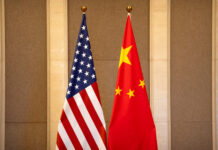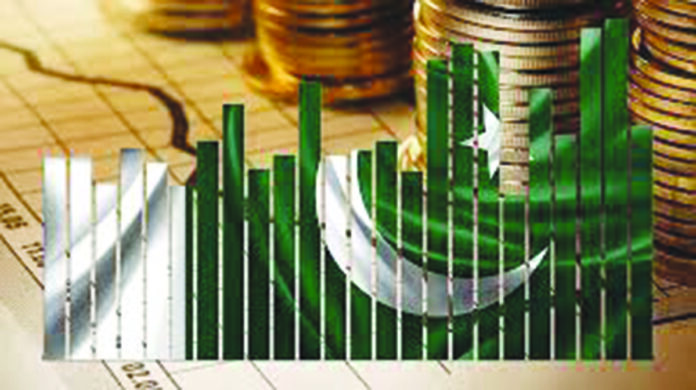Since Independence Pakistan has been trapped in deep-seated problems. In order to explore the crisis state in Pakistan’s economy I want to trace it from the very beginning. Therefore, for better understanding I have divided the economic history of Pakistan into three phases.
First, the era of the experimental economy that starts from Day One of Independence and ends in 1979. This era is marked by a weak economic emblem because after independence the territories which were given to Pakistan according to the Radcliffe award were all deprived of industry and there was no proper economic infrastructure. The most important thing in this era that needs to be highlighted is that we remained hapless to make a constitution after taking nine years. As there was no constitution in the country therefore there was no economic policy either.
Afterwards, the Ayub period started and he introduced a model for economy which is named the Harvard Trickledown model which states that the approach basically means that the best way to help the poor is to give money to the rich. The benefits eventually trickle-down. The same approach was practiced by Ayub Khan as he handed the economy to the 22 elite families of Pakistan in order to grow it at a greater pace and ultimately for the collective good of the country. This model remains deficient in addressing the miseries of the people.
Afterwards, when Bhutto came, he sidelined the Harvard Trickledown model and introduced his own model of Nationalization and he made private enterprises state-owned. This was the socialist model and it was absolutely opposite to the Harvard Trickledown model. One of the biggest harms to the country from this model was that the private sector ceased to work and business activities also got reduced. Ultimately this led to massive unemployment.
This is all the tale of the era of experimental economy in which experimentation was done with two opposite models and it harmed the country.
Second, the era of Twisted Economy starts from 1980 and it ends in 2000. It is marked by the Martial law of Ziaul Haq. He had abandoned Bhutto’s nationalization model and wanted to introduce his own model but at that moment there was the commencement of the Soviet Afghan war and Pakistan was the biggest ally of the USA in it; therefore the USA sent billions of dollars to Pakistan for Afghan jihad aid.
In this era the country ran on US aid. After the end of the Soviet Afghan war Zia died in a plane crash and Benazir came as prime minister and she used to take short term loans from IMF and the World Bank in the midst of economic policy making, but her government was toppled. Likewise, Nawaz Sharif did the same and his government was also toppled Then again Benazir and Nawaz came but there was no proper economic policy formulation in the country due to the chaotic and uncertain political system in the country.
To see all these paradigms, we will say that Pakistan is in a developmental paradox, it flourished in a limited scope and gives benefits to already rich people. We need an all inclusive economic policy to develop all the sectors and the fabric of the society.
Then began a new period, the ‘Era of Problematic Economy’ which extends from 2000 to today. In the very start Musharraf realized that Pakistan was going through US sanctions, therefore he helped America in the Afghan war and they gave aid in response. Meanwhile, he formulated his own economic model that is known as the consumer credit model and he started investing all the aid into it.
He began to give loans to all educated people who had business ideas to run small enterprises. As these small enterprises worked and generated revenue therefore the small enterprises converted into the big ones and the economy was standing on its feet. But after 2007 the USA ceased the aid, therefore Pakistan had no money to generate energy to run the industries therefore industries could not cope in the midst of load shedding and ultimately everything stopped flourishing. This was the darkest period of economic history in which Pakistan was trapped into circular debt, current account deficit, fiscal defici;, the industrial sector collapsed, and GDP growth slowed down. Afterwards Nawaz Sharif came and he introduced his own model, Crony Capitalism, an economic system characterized by close, mutually advantageous relationships between business leaders and government officials.
He supported and uplifted the iron industry, poultry industry, sugar industry and housing industry at the expense of others therefore a very small group of people flourished and prospered at the expense of a very large chunk of people. In this period one thing that is industrious is the CPEC through which large scale development occurs and still projects have been inaugurated. Afterwards Imran Khan came and sidelined Nawaz Sharif’s Crony Capitalism and he cracked down against the industrialists. He introduced his own model known as Riyasat-i-Madina. He wanted to uplift the common people but he destroyed the economy. Now Shahbaz Sharif is in the chair and he is confused about what to opt for, because his situation is like that of a mechanic of a bicycle but he has to fix the truck. He has no policy, all that he is doing is to fix the mess of the previous government. Till yet he has remained unable to do so.
So this was the economic history of Pakistan now we must extract from our economic history where we are lagging behind.
The first thing that comes to mind is that we lack policy implementation. We have seen that there is no continuity of the policy. Every ruler has his/her own economic model or intent to run the economy. Apart from this we have a flawed policy framework and our policy makers do not know what we have to make. In the agriculture sector we invest 45 percent but get 19 percent in return. On the contrary, in the industrial sector we invest 19 percent and get 30 percent output. Just imagine how senseless we are. This is just one example and every department is like that.
Secondly we have political instability because economic policies are always derived from the political system. The tragedy we have is that we did not have a stable political system. Sometimes we have martial law and sometimes hybrid regimes. Apart from this we have polarized politics and institutional imbalances.
Thirdly, the issue we have is fiscal federalism, the supremo never wants to devolve his power to the grass root level. Federal and provincial governments are reluctant to devolve the powers and this generates the problem of tax collection.
Fourthly, the issue we have is fiscal policy in which what happens is that the expenditures exceed the income. This happens due to not earning the money from where it should be, from taxation and state-owned enterprises. We have a fragile system that we cannot generate proper revenue due to corruption and intervention.
Fifthly we have a flawed monetary policy. Our banking system never allowed common people to flourish. Banks always opt to give loans to industrialists and never give feasible credit to the middle class to properly prosper.
To see all these paradigms, we will say that Pakistan is in a developmental paradox, it flourished in a limited scope and gives benefits to already rich people. We need an all inclusive economic policy to develop all the sectors and the fabric of the society.






















